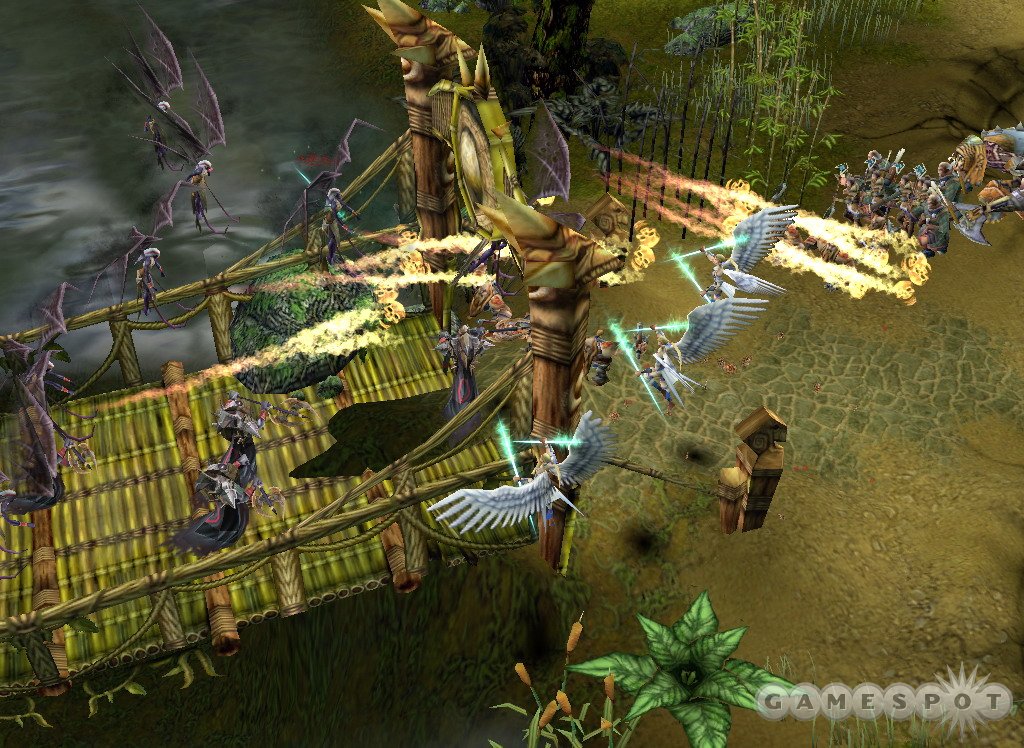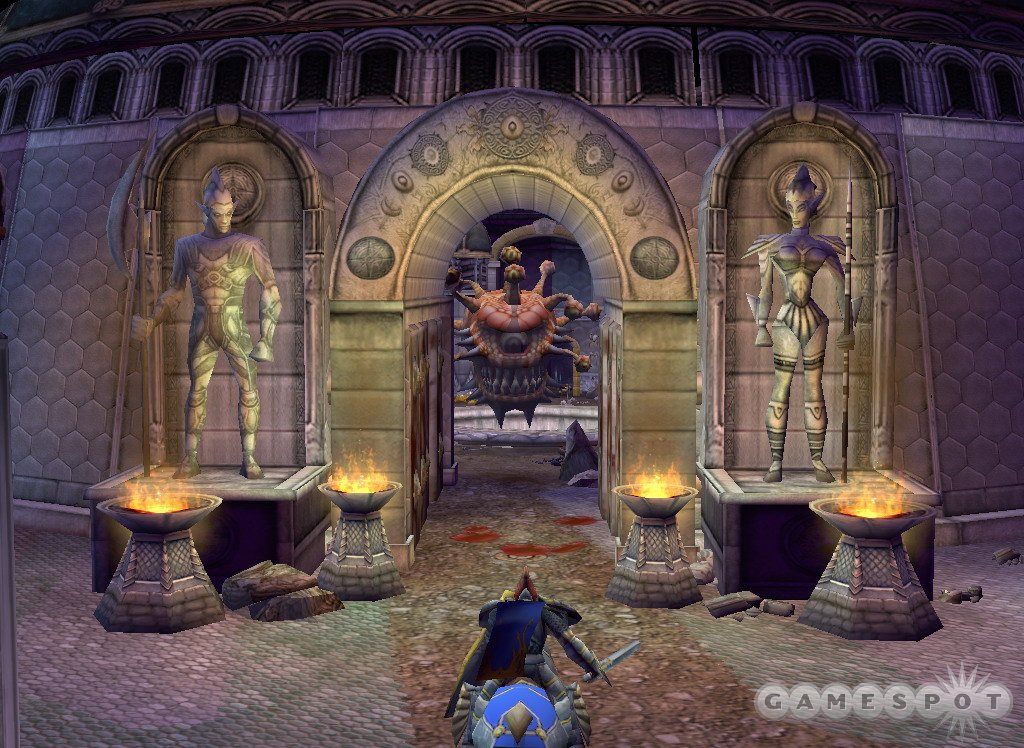Dragonshard Designer Diary #1 - An Introduction to Dual Layers
Liquid Entertainment's creative director Ed Del Castillo gives an overview of what you can expect from the studio's next strategy game.
In the beginning there was light. And maybe a little sound. And real-time strategy games that would make you collect resources, build structures, and amass a huge army as quickly as possible to pummel your opponents. Then you'd do it again. And again. These days, real-time strategy games now incorporate many different features. Consider Dragonshard, the upcoming game from developer Liquid Entertainment and publisher Atari, which will include role-playing-game-style character advancement and exploration, unified military companies, and even "dual layers"--that is, multiple playing fields above and below ground. The new game will also be the first to take place in Eberron, an all-new fantasy world designed by Wizards of the Coast, the publisher of the authentic Dungeons & Dragons tabletop game. Creative director and Liquid Entertainment president Ed Del Castillo explains in this first diary, and shares additional thoughts in our exclusive video designer diary, linked at the bottom of this page.

Look Out Below (and Above)
By Ed Del CastilloPresident/Creative Director, Liquid Entertainment
Hi, I'm Ed Del Castillo, the creative director on Dragonshard, and welcome to our first designer diary. In case you've never read one of these things before, over the next coming months, we will be bringing you some overviews of the coolest features in the game. We'll probably trade off who writes these just so you'll get different perspectives as well. Now, since this is a "designer diary," some of the talk might get a bit philosophical, but we really hope that you'll humor us and read it anyway, since it will fill you in on the thinking behind the game.
Let's get started. Today, we're talking about being able to play the game on two layers simultaneously, or dual-layer play.
Dragonshard is set in the new Dungeons & Dragons campaign world of Eberron. Although there are some notable differences between this world and the others before it, there are some major similarities. Most notably, Eberron continues the fine D&D tradition of providing dank and foreboding areas for players to explore and conquer.
Since we saw the need for "dungeons" in a "Dungeons & Dragons" game, one of the first decisions that we made on this game was to include a second layer: a subterranean level that players could traverse in order to explore, kill monsters, get around traps, gather treasure, and gain experience levels.
At first, we created standard dungeons with stone corridors and wooden doors; standard D&D stuff. Very quickly, this felt too confining and reminded us of our old Greyhawk and Forgotten Realms [tabletop] campaigns too much. We decided that a game set in Eberron needed something special, so we came up with a story that buried a whole city under the surface. This underground city gave us room and flexibility as well as a great theme for the underground space. The city allowed us to have epic spaces and still have traps, monsters, and treasures. So now we had the environment, but that wasn't enough.
In order for the underground experience to really mean something it would have to be dramatically different from the way you would play on the surface. We decided that the surface needed to play like a war, with units moving in squads and forming battle lines and exchanging fire in an organized manner. Strategic gameplay, in other words. The belowground play came easily at that point. Individual troops would band together to become adventure parties. These parties would work like a commando team, moving together to clear out traps, kill off monsters, and gather the loot. The player would use these units in smaller groups and spend more time managing each individual unit. Tactics, in other words.
Overall, the player now gets two distinct experiences in the same game. In the above-ground play experience, players build captains which can summon henchmen to them. This combined group forms a squad on the battlefield. Each squad works together with other squads to form an army. This army is the fighting force of the aboveground world. So, above the surface, you will see large groups of units fighting in concert. Large groups will be clashing with other large groups and forming battle lines that exchange fire. The goal of the aboveground game is to create a structured war, not just two mobs coming together.
The belowground play is altogether different. True to D&D, it will be paced a bit more slowly. Only the captains of the army are allowed down into the sunken city, and they make up an adventuring party. Thieves will detect and disarm traps, wizards will open secret doors, and fighters will hold off the enemy while archers nail them with arrows. The goal with the underground is to give the player a "dungeon crawl lite"; killing monsters, exploring, finding gold and magic items, solving quests, and gaining experience without heavy rules to slow the game too much. Now we had two cool and fun experiences. The next step was connecting the two.

Bringing the two experiences together created a whole new aspect to the strategy. For starters, we thought of things we could do in the underground that affected the aboveground. We put the main resource of the game, gold, mostly in the underground. Now the player would be strongly incentivized to go into the underground to fund his army. We placed entrances to the dungeon in strategic areas. Lastly, we created cool, unique locations in the underground that would give your army bonuses as long as you held them. Cool things started to happen. Healing fountains in the underground became forward hospitals and hotly contested areas, players tried to sneak up on each other through the underground, shrines of regeneration and strength became important to acquire if you wished to overpower a stronger foe, and players were disarming traps, getting the treasure, and then rearming them for the enemy to get caught in. It was wonderful. If a player was strong upstairs, his foe could get strong downstairs. It started to feel like there was no single "right way to play" and that the freedom of D&D was beginning to show.
Well, we're still working on the game, and there's a lot of balance and tweaking still to be done, but it is coming together. It's a game that we hope will breathe some new life into the real-time strategy genre and let the players taste the D&D experience of exploring worlds, defeating big enemies, getting cool loot, leveling up, and crushing the enemy!
Got a news tip or want to contact us directly? Email news@gamespot.com
Join the conversation